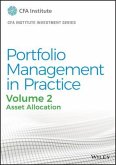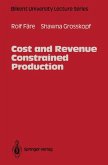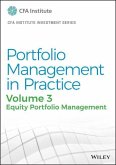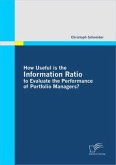Financial investors frequently confront factors such
as financial regulations that prevent them from
attaining a first-best solution to the optimal asset
allocation problem. For example, they may be required
to implement a mean-variance efficient portfolio, or
they may be constrained to invest in a
non-well-diversified choice of assets, such as
holding stocks only or bonds only, or they may be
constrained from short-selling. Such constraints
imply the imposition of a welfare loss on the
investor. That a welfare loss is inevitable is well
known, but the portfolio choice literature thus far
has offered little guidance on how to measure the
loss, and how various factors will influence the
amount of the loss. This volume tackles the welfare
loss problem in a comprehensive and rigorous manner.
Using a combination of mathematical analysis and
computer simulation, deep insight is achieved into a
variety of constrained portfolio choice problems. The
book will be found highly illuminating to portfolio
choice theorists as well as to students and
practitioners of investment analysis.
as financial regulations that prevent them from
attaining a first-best solution to the optimal asset
allocation problem. For example, they may be required
to implement a mean-variance efficient portfolio, or
they may be constrained to invest in a
non-well-diversified choice of assets, such as
holding stocks only or bonds only, or they may be
constrained from short-selling. Such constraints
imply the imposition of a welfare loss on the
investor. That a welfare loss is inevitable is well
known, but the portfolio choice literature thus far
has offered little guidance on how to measure the
loss, and how various factors will influence the
amount of the loss. This volume tackles the welfare
loss problem in a comprehensive and rigorous manner.
Using a combination of mathematical analysis and
computer simulation, deep insight is achieved into a
variety of constrained portfolio choice problems. The
book will be found highly illuminating to portfolio
choice theorists as well as to students and
practitioners of investment analysis.








